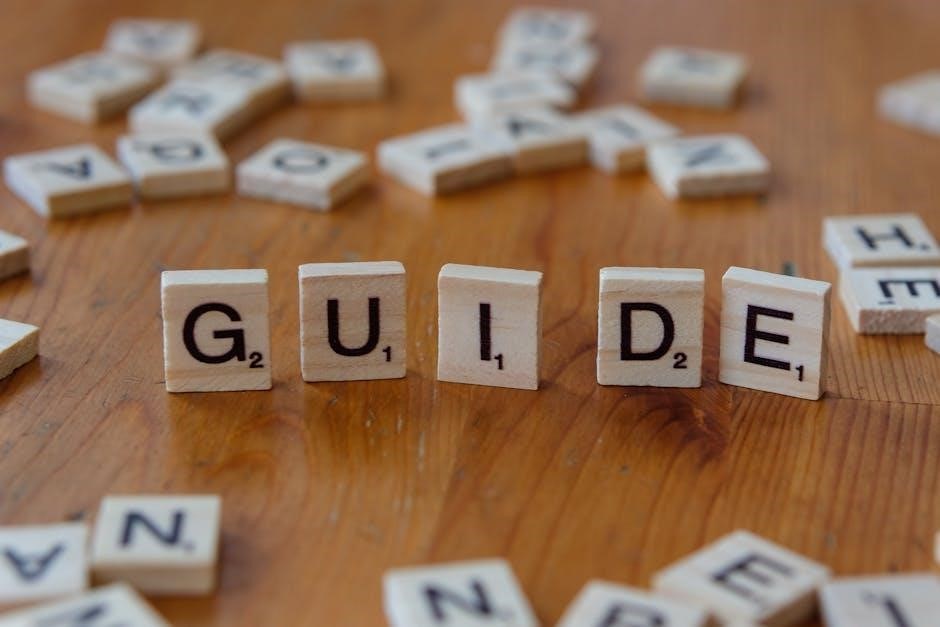Intex Pool Instruction Manual: A Comprehensive Guide
Welcome to the comprehensive guide for your Intex pool! This manual aims to provide you with essential information for safe and enjoyable pool ownership. From setup to maintenance, we’ve got you covered.
Intex is a renowned brand in the world of above-ground pools, offering a diverse range of high-quality items designed for both leisure and utility; Thanks for buying an Intex pool! This instruction manual is designed to help you set up, maintain, and safely enjoy your Intex pool. Please read this manual carefully before setting up your pool. This information will help extend the pool life and make the pool safer for your family’s enjoyment. A team of 2-3 people is recommended for pool set up. Additional people will speed up the installation. Accessories may not be provided with the pool. Intex offers a wide selection to suit your needs. Whether you’re looking for a small inflatable pool or a larger frame pool, Intex has a pool for you. Each pool comes with a user manual that provides detailed instructions on setup, maintenance, and safety guidelines. Read, understand, and follow all instructions carefully before installing and using this product. Don’t forget to try these other fine Intex products: Pools, Pool Accessories, Inflatable Pools and In-Home Toys, Airbeds and Boats available at fine retailers or visit our website listed below. Misplaced your manual? No worries we’ve got you covered. Access and download a wide range of Intex PDF user manuals and specifications to enhance your experience. The last added Intex manual has been added on 2024-10-02 and is the Intex Happy Crab Easy Set Pool. Get Started! Welcome to your new Intex Sand Filter Pump Manual user manual. This guide will walk you through everything you need to know to operate and maximize your experience. Before you begin using … Thanks for buying an Intex pool. Please read this manual before setting up your pool. This information will help extend the pool life and make the pool safer.

Setting Up Your Intex Pool
Proper setup is crucial for the longevity and enjoyment of your Intex pool. This section will guide you through site selection, preparation, and the step-by-step assembly process to ensure a successful installation.
Site Selection and Preparation
Choosing the right location for your Intex pool is paramount for safety and ease of maintenance. Begin by selecting a level area, free from rocks, roots, and sharp objects that could puncture the pool liner. A flat surface ensures even water distribution and prevents undue stress on the pool’s structure. Clear the area of any debris, including grass, weeds, and stones. Consider the proximity to electrical outlets and water sources for convenient pump and filter operation. Avoid setting up the pool directly under trees, as falling leaves and branches can contaminate the water and require more frequent cleaning. Ensure adequate drainage around the pool to prevent water accumulation and potential damage to the surrounding area. Check for underground utilities, such as gas lines or electrical cables, before starting excavation or leveling. A slightly sloped area can be leveled using sand or compacted soil, ensuring a stable and even base. Use a level to verify the ground’s flatness in multiple directions. It is recommended to use a ground cloth or tarp underneath the pool liner to provide an extra layer of protection against punctures and abrasions. Consider the direction of sunlight and wind exposure when choosing the site. Ideally, the pool should receive ample sunlight for warmth, but be shielded from strong winds that can cause excessive water evaporation and debris accumulation. Check local regulations and homeowner association rules regarding pool placement and fencing requirements. Remember to factor in space for walking around the pool and for any additional accessories, such as ladders or pool covers. Proper site selection and preparation will contribute significantly to the longevity and enjoyment of your Intex pool.
Pool Assembly: Step-by-Step Instructions
Assembling your Intex pool requires careful attention to detail. Begin by unpacking all components and laying them out for easy access. Refer to the parts list in your manual to ensure you have everything needed. Start with the frame, connecting the metal poles according to the provided diagram. Ensure all connections are secure and properly aligned. Next, carefully unfold the pool liner and spread it evenly over the prepared ground cloth. Position the liner so that the drain plug is accessible and facing the desired direction. Insert the frame poles into the sleeves along the top edge of the liner, working your way around the pool. Ensure the liner is smooth and free of wrinkles. Connect the T-joints and corner pieces, securing them tightly to the frame poles. Double-check that all connections are properly aligned and locked into place. Attach the legs to the frame, making sure they are evenly spaced and securely fastened. Begin filling the pool with water, monitoring the liner for any signs of stretching or misalignment. As the water level rises, smooth out any remaining wrinkles in the liner. Install the pump and filter according to the manufacturer’s instructions, ensuring all connections are watertight. Connect the hoses to the pool’s inlet and outlet fittings, tightening the clamps securely. Once the pool is filled to the recommended level, inspect all connections for leaks. Adjust the water chemistry as needed, following the guidelines in the water chemistry section. Finally, install any accessories, such as ladders or pool covers. Regularly inspect the pool and its components for any signs of wear or damage. Proper assembly will ensure the stability and longevity of your Intex pool, providing you with years of enjoyment.

Maintaining Your Intex Pool
Proper maintenance is crucial for extending the life of your Intex pool and ensuring a clean and safe swimming environment. This section will cover essential aspects of pool care, including water chemistry, cleaning, and filtration.
Water Chemistry and Balancing
Maintaining proper water chemistry is paramount for a healthy and enjoyable swimming experience. Imbalanced water can lead to algae growth, cloudy water, skin and eye irritation, and even damage to your pool liner and equipment. Regularly testing and adjusting your pool water’s chemical levels is essential.
Key Chemical Levels:
pH: The ideal pH range for pool water is between 7.2 and 7.8. This range ensures swimmer comfort and optimal sanitizer effectiveness. Low pH (acidic water) can corrode metal parts and irritate skin, while high pH (alkaline water) can cause scaling and cloudy water. Use pH increaser (soda ash) to raise pH and pH decreaser (sodium bisulfate or muriatic acid) to lower it.
Total Alkalinity: Alkalinity acts as a buffer for pH, preventing drastic swings. The recommended range is 80-120 ppm (parts per million). Low alkalinity makes pH unstable, while high alkalinity can lead to scaling. Use alkalinity increaser (sodium bicarbonate) to raise alkalinity and muriatic acid to lower it.
Sanitizer (Chlorine or Bromine): Sanitizers kill bacteria and algae. Chlorine is the most common sanitizer. Maintain a chlorine level of 1-3 ppm. Bromine is an alternative, especially for indoor pools, with a recommended level of 3-5 ppm. Use chlorine tablets, liquid chlorine, or a salt water system to maintain sanitizer levels.
Calcium Hardness: Calcium hardness refers to the amount of calcium dissolved in the water. The ideal range is 200-400 ppm. Low calcium hardness can corrode pool surfaces, while high calcium hardness can cause scaling. Use calcium chloride to increase calcium hardness.
Testing Your Water:
- Use a reliable pool water test kit or test strips to check your water chemistry regularly (at least twice a week, or more often during periods of heavy use or after rain).
- Bring a water sample to your local pool supply store for professional testing and advice.
Balancing Your Water:
- Adjust chemicals according to the test results and the manufacturer’s instructions.
- Add chemicals slowly and in small increments, allowing time for them to circulate and dissolve before retesting.
- Always follow the safety precautions on the chemical labels.
- Consider using a pool water balancing app or calculator to help you determine the correct amounts of chemicals to add.
Regularly monitoring and adjusting your pool water chemistry will ensure a safe, clean, and enjoyable swimming experience for you and your family. Don’t neglect this crucial aspect of pool ownership!
Cleaning and Filtration
Maintaining a clean and clear Intex pool requires a combination of regular cleaning practices and proper filtration. These processes work together to remove debris, prevent algae growth, and ensure a healthy swimming environment. Neglecting either aspect can lead to cloudy water, unsanitary conditions, and potential damage to your pool equipment.
Cleaning Your Intex Pool:
Skimming: Regularly skim the surface of your pool with a leaf skimmer to remove leaves, insects, and other floating debris. Do this daily, or more often if needed, to prevent debris from sinking to the bottom and decaying.
Vacuuming: Vacuum the pool floor at least once a week to remove dirt, algae, and settled debris. You can use a manual pool vacuum or an automatic pool cleaner. Manual vacuums require you to manually guide the vacuum head across the pool floor, while automatic cleaners do the work for you.
Brushing: Brush the pool walls and floor regularly to prevent algae buildup and remove stubborn dirt. Use a pool brush with nylon bristles for vinyl liners and a brush with stainless steel bristles for concrete pools. Pay special attention to areas around fittings, steps, and corners where algae tend to accumulate.
Filtration:
Your Intex pool’s filter is responsible for removing fine particles and impurities from the water, keeping it clean and clear.
Filter Types: Intex pools typically come with cartridge filters or sand filters.
Cartridge Filters: These filters use a replaceable cartridge to trap debris. Clean the cartridge every two weeks by rinsing it with a garden hose. Replace the cartridge every one to two months, or as needed, depending on pool usage and water conditions.
Sand Filters: These filters use silica sand to filter the water. Backwash the filter regularly (usually once a week) to remove accumulated debris. Backwashing involves reversing the flow of water through the filter to flush out the dirt. Replace the sand every three to five years.
Filter Maintenance:
- Clean or backwash your filter regularly according to the manufacturer’s instructions.
- Inspect the filter for damage and replace parts as needed.
- Ensure that the filter pump is running for an adequate amount of time each day (typically 8-12 hours) to properly circulate and filter the water.
- Consider using a pool cover to reduce the amount of debris that enters the pool, thereby reducing the workload on the filter.
By following these cleaning and filtration guidelines, you can maintain a sparkling clean and healthy Intex pool all season long. Remember to consult your pool’s user manual for specific instructions and recommendations.

Troubleshooting Common Issues
Even with careful setup and maintenance, you might encounter issues with your Intex pool. This section provides guidance on diagnosing and resolving common problems to keep your pool in optimal condition.
Leaks and Repairs
Discovering a leak in your Intex pool can be frustrating, but identifying and repairing it promptly is crucial to prevent water loss and potential damage to the pool structure. Leaks can occur in various locations, including the pool liner, seams, valves, and connections. A visual inspection is the first step in locating the leak. Carefully examine the pool liner for any visible punctures, tears, or weak spots; Pay close attention to the seams, as these are common areas for leaks to develop. Check the valves and connections for any signs of dripping or moisture. If you suspect a leak but cannot find it visually, try the dye test. Add a small amount of food coloring or pool dye near the suspected leak area. If there is a leak, the dye will be drawn towards it, making it easier to pinpoint the location. Once you have identified the leak, you can proceed with the repair. For small punctures or tears in the pool liner, a vinyl repair patch is typically sufficient. Clean the area around the leak with a mild soap and water solution, then dry it thoroughly. Apply the adhesive patch according to the manufacturer’s instructions, ensuring a secure and watertight seal. For larger tears or leaks in the seams, you may need to use a more substantial repair method, such as a vinyl repair kit that includes a sealant and fabric backing. Follow the instructions carefully to ensure a durable and long-lasting repair. If the leak is located in a valve or connection, try tightening the fittings or replacing any worn-out O-rings or gaskets. If the leak persists, you may need to replace the entire valve or connection. Remember to always drain the pool below the level of the leak before attempting any repairs. This will prevent water from seeping into the repair area and compromising the seal. By following these steps, you can effectively troubleshoot and repair leaks in your Intex pool, ensuring a safe and enjoyable swimming experience.
Pump and Filter Problems
Maintaining a properly functioning pump and filter system is essential for keeping your Intex pool water clean and clear. If you encounter issues with your pump or filter, it’s important to troubleshoot and address them promptly to prevent further problems and ensure optimal water quality. One common issue is a pump that won’t start. First, check the power supply to ensure the pump is receiving electricity. Verify that the power cord is securely plugged into a working outlet and that the circuit breaker has not tripped. If the pump still doesn’t start, inspect the pump motor for any signs of damage or overheating. If the motor is hot to the touch, allow it to cool down before attempting to restart it. Another common problem is a pump that runs but doesn’t circulate water effectively. This could be due to a clogged filter. Remove the filter cartridge and clean it thoroughly with a garden hose to remove any debris or buildup. If the filter is old or damaged, replace it with a new one. Air pockets in the pump can also hinder water circulation. To remove air pockets, try priming the pump by filling it with water before starting it. You may need to repeat this process several times until the pump is fully primed. A decrease in water flow can also be caused by obstructions in the skimmer or suction lines. Check the skimmer basket for any debris and clean it out regularly. Inspect the suction lines for any kinks or blockages that may be restricting water flow. If you notice a leak around the pump or filter housing, tighten the connections and replace any worn-out O-rings or gaskets. If the leak persists, you may need to replace the entire pump or filter housing. Regularly backwashing the filter is crucial for maintaining its efficiency. Backwashing removes accumulated debris from the filter media, allowing it to function properly. Follow the manufacturer’s instructions for backwashing your specific filter model. By addressing these common pump and filter problems promptly, you can ensure that your Intex pool water remains clean, clear, and inviting for swimming.

Safety Guidelines
Ensuring the safety of everyone around your Intex pool is of paramount importance. Adhering to these safety guidelines will help create a secure and enjoyable swimming environment for you, your family, and your guests. Constant adult supervision is absolutely essential when children are near or in the pool. Never leave children unattended, even for a moment. Designate a responsible adult to actively supervise children at all times. This designated supervisor should not be distracted by other activities, such as reading, using a phone, or socializing. Secure the pool area with appropriate fencing and self-closing, self-latching gates. This will help prevent unauthorized access to the pool, especially when it is not in use. Regularly inspect the fencing and gates to ensure they are in good working condition. Keep the pool area free from hazards, such as toys, furniture, and electrical appliances. These items can create tripping hazards or pose an electrical shock risk. Ensure that all electrical devices used near the pool are properly grounded and protected by a ground fault circuit interrupter (GFCI). Learn and practice basic water safety skills, including swimming, treading water, and floating. Encourage all family members and frequent pool users to take swimming lessons. Keep a first aid kit readily available near the pool area. The kit should include bandages, antiseptic wipes, pain relievers, and any other necessary medical supplies. Post emergency contact information near the pool, including the phone numbers for local emergency services, poison control, and your family physician. Never allow anyone to swim under the influence of alcohol or drugs. These substances can impair judgment and coordination, increasing the risk of accidents. Enforce a “no running” rule around the pool area to prevent slips and falls. Keep the pool water clean and properly balanced to prevent the spread of germs and bacteria. Regularly test and adjust the water chemistry as needed. By following these safety guidelines diligently, you can create a safe and enjoyable swimming environment for everyone who uses your Intex pool.